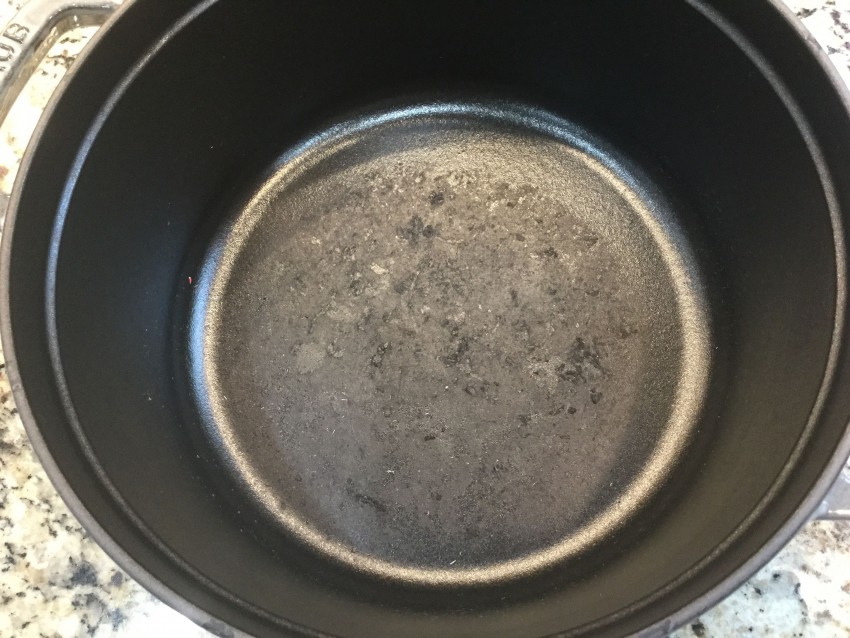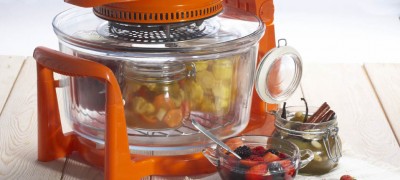How to ignite a new cast iron skillet
Cast iron is a whimsical alloy and therefore, in order for dishes made from it to serve as long as possible, certain rules should be adhered to. The key to success is respect for the dishes from the very first days. The longer the original surface structure remains, the longer the pan will delight.
Cast iron cookware has been used for several centuries, but even today it is in great demand.
Features of cast iron cookware
Good cast iron cookware is just a godsend for a cook and a housewife. Our mothers and grandmothers loved these pans. Cast iron has excellent heat storage capacity, it heats up slowly, which prevents food from burning. Such a frying pan needs to be heated more, but in it you can not only fry, but also stew food.
The alloy is quite porous and forms a natural non-stick coating, trapping air or fat from food in these pores. If the product has been exposed to coarse sponges and chemicals during the cleaning process, then it can be dried over a fire and lubricated with vegetable oil on the inside.
Cast iron keeps heat well, so cooked food stays warm for a long time.
Such dishes have a number of advantages:
- very long service life;
- with proper calcination, it receives a non-stick layer;
- models with a removable handle can be used in the oven;
- you can even use metal shovels and rough washcloths;
- allow for long-term processing of products, even over high heat.

However, this kitchen utensil also has disadvantages:
- the manifestation of rust is possible, so it is important to wipe it thoroughly;
- it is impossible to store ready-made food in it for a long time, as clogging of micropores can occur;
- it is very heavy, especially large pans or cauldrons;
- It cannot be washed in the dishwasher: the non-stick layer will disappear and the cast iron will darken a lot.

These pans are best used with a lid. It will prevent splashes from falling on the stove and on the outside of the dishes, which will lead to heavy dirt and carbon deposits, which in turn will impair the thermal conductivity of the pan.
A cast iron pan should be calcined before the first use, as otherwise it can very quickly lose its useful properties.
Why do you need annealing
During the production process, the dishes undergo several treatments, including processing with machine oil. In addition, before going on sale, it is treated with special agents so that corrosion does not appear during storage. The porous structure of cast iron absorbs all lubricants and, to get rid of them, washing the dishes alone will not be enough.
Therefore, a new skillet needs to be cleaned with rock salt, which will help remove deep-seated chemicals as well as unpleasant odors. Otherwise, the cooked food will absorb it all.
At home, this is easy to do, in addition, calcining will help:
- Notice cracks, chips and other defects.
- Remove harmful chemical components from the pores of cast iron.
- Seal the pores.
- Improve the properties of the alloy and the condition of the coating, which will extend the service life.
The calcination procedure is carried out not only with new pans, but also with cauldrons or pots.
Preparing new cast iron cookware will facilitate further cleaning. In addition, after this procedure, the bottom will heat up evenly. An exception is enamelled elements. They are not coated with an anti-corrosion coating. However, some housewives advise to burn products that have black enamel coatings.
Preparing for annealing
Before burning the product, wash it well with a soft sponge and detergent. Then rinse and wipe dry. This will help remove the base coat of the special grease.
Some manufacturers do the calcination and the creation of a non-stick layer themselves. To verify this, you should carefully read the label. In this situation, new dishes are simply washed, dried and ready to use.
Description of the calcination method
If done correctly, the procedure is quick and easy. During processing, high temperatures are applied to the surface of the bottom of the cookware. There are several calcination options.
Traditional
The easiest way is using vegetable oil or fat. The pan is placed on the stove and heated for 10-15 minutes over medium heat. In the process, an unpleasant odor will be emitted, so you should turn on the hood and open the window. When white smoke appears, turn off the fire.
After cooling, pour oil into a frying pan and put on medium heat. So they stand for half an hour. Then the oil is drained, a new one is poured in and the procedure is repeated a couple more times. Finally, after draining the oil, wipe the dishes with a dry napkin.
Before the first use, a new cast iron frying pan must go through a stage of calcining in oil. It is he who creates a natural non-stick layer that contributes to the formation of a golden crust on food.
With salt
The salt roasting technology takes a little longer, but it is also quite simple. Salt is a natural sorbent that perfectly absorbs any dirt. It will do a great job with factory grease.
The procedure consists of several stages:
- A thick layer of salt up to 3-4 cm is poured onto the bottom of the pan.
- With constant stirring, it is fried over medium heat for 40 minutes. The salt should darken.
- Remove cookware from heat, allow to cool and then discard salt.
- Rinse in running water and dry.
- Pour in some oil over medium heat for 20 minutes.
- Repeat the procedure with calcining the oil a couple more times.
- Drain oil and wipe thoroughly with a clean cloth.

In the oven
This method is suitable for those who do not like to stand over the stove and follow the process. You can ignite a new frying pan in the oven, only its handle must be cast iron or removable.
The procedure is performed in a specific sequence:
- Preheat oven to 180 degrees.
- Pour oil into the utensils and place in the oven for 30-40 minutes.
- Drain the oil, rinse and wipe dry.
- Add oil again and repeat the procedure.
- Cool the dishes with oil.
- Drain it and wipe the pan dry with a clean cloth.

Outdoors
The following recipe is suitable for those who have a summer cottage or private house. Not everyone has the opportunity to light a fire.
Igniting a cast iron pan in the open air consists of several stages:
- Make a fire using only wood and coals.
- Place the utensils over the fire and heat well.
- Leave for a few minutes until the surface of the pan turns gray.
- Remove, cool and rinse in running water.
- Wipe the surface with a napkin or cotton pad moistened with vegetable oil.

Safety engineering
Despite the fact that all calcination options are quite simple, there are some subtleties that should be considered. Observance of basic safety rules will help to avoid unforeseen situations:
- The dishes should be free of plastic or wooden handles or other parts.
- Take products only with potholders and in special gloves.
- Do not leave cookware unattended on fire.
- Carry out the ignition with the hood switched on and in a well-ventilated area.
- Keep children or animals away.

Follow-up care
During the procedure, the dishes can change color from gray to brown. Do not be afraid, after cooling down, the color will be restored again. The worst case scenario is the appearance of cracks, which indicates damage and marriage.
After completing the calcination procedure, the pan should be rinsed well and wiped dry.
Cast iron cookware differs in some care features:
- She does not like contrasting temperature changes; you cannot immerse heated dishes in cold water.
- It is not recommended to boil water in it.
- Do not store food and water in cast iron containers.
- Do not clean with wire brushes or hard sponges.
- Try to avoid falling, as cracks and deformation may appear.
- If food is burnt, it is necessary to wash the dishes and repeat the baking process to restore the protective layer.
- Wash only with clean water, dry thoroughly and do not cover in a cupboard.
How to light an old frying pan
If the food in the cast iron cookware begins to burn, the following procedure should be carried out. The pan is thoroughly washed and dried, and then the bottom is covered with a thick layer of salt. It is placed in a preheated oven for one hour. After cooling, the salt is poured out, and the pan is wiped with a swab with vegetable oil. If after the procedure the non-stick properties have not been restored, and the food still burns, you can repeat the roasting in the oven.
To remove burnt food residues from the bottom of the dishes, do not use abrasive pastes or powders or metal brushes or scouring pads. You can pour hot water over the pan and let it stand for 20-30 minutes. Burnt food will soften and can be easily removed with detergent and a washcloth.
In order not to violate the non-stick properties of cast iron cookware, it is not recommended to cool hot pans in running cold water. They should cool down gradually.
How to prepare enamel or nonstick cookware
Getting a new non-stick frying pan to work is not easy, but still possible. Teflon coating does not tolerate high temperatures.Alternatively, you can heat the aluminum frying pan to 200 degrees, and then grease with oil, cover with a lid and leave to cool completely. Then wipe with a clean cloth.
Some users claim that the non-stick coating is strictly forbidden to ignite. However, a gentle cleaning option can be selected for each type of cookware.
It is not recommended to temper enameled and ceramic products. It is best to wash such dishes well, and then pour water into them and boil for several minutes. After cooling, drain the water and wipe dry.
Aluminum pans are characterized by good thermal conductivity, a large supply of heat inside. After heating, they cool slowly. The coating prevents foreign flavors from entering the food. The dishes should be washed immediately after cooking. It is perfect for slow stewing or cooking broths, and it is also good to cook the base for jellied meat in it.
In order for cast iron cookware to serve for a very long time, it must be washed immediately after cooking and wiped dry. It is better to cook food over medium heat. Store pans only in a dry and well-ventilated place, and do not place other objects on top of them to avoid damaging the protective layer.
Video: how to ignite a cast iron skillet





